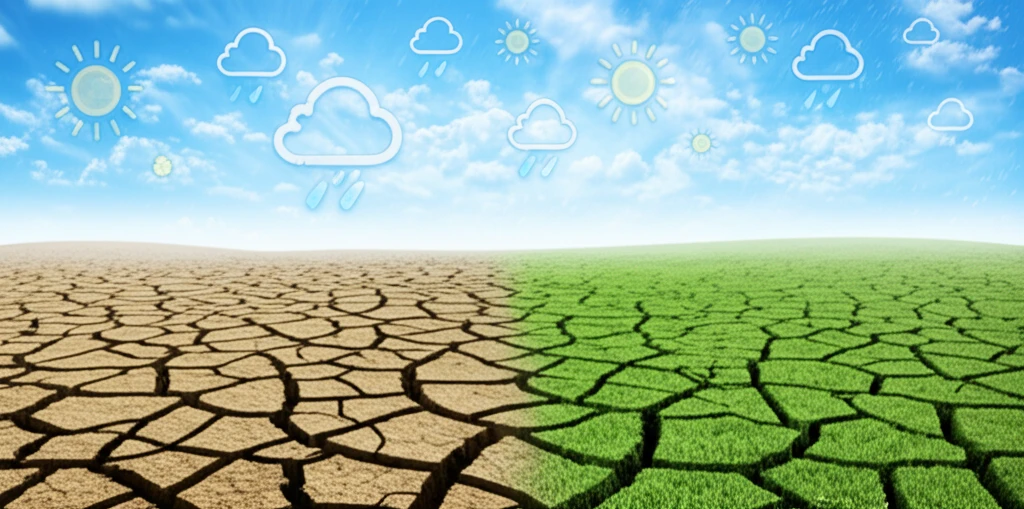
Rangeland Revival: How Weather-Smart Planning Can Save Our Ecosystems
"Discover how a new weather-centric approach to rangeland revegetation can boost success rates and help combat global degradation, ensuring a greener future."
Rangelands, covering 40% of the Earth’s land surface, are vital ecosystems supporting about 2.5 billion people. These arid, semiarid, and subhumid regions store 45% of the world's terrestrial carbon, sustain 50% of global livestock and wildlife, and house a third of all plant and animal diversity. Yet, these crucial biomes are highly susceptible to degradation and invasion, threatening global sustainability.
The harsh conditions of rangelands, characterized by low and variable rainfall and extreme heatwaves, stress food chains and ecosystems, making them vulnerable to degradation. Conservative estimates suggest that about 20% of global arid and semiarid rangelands are degraded, with an additional 30 million acres declining each year. Despite significant investments in revegetation and restoration, success rates remain alarmingly low.
In the United States, even with the latest science and technology, revegetation success rates are often less than 5%. But a dedicated group of scientists is determined to change this. Their innovative approach, outlined in “Weather-Centric Rangeland Revegetation Planning,” offers new hope for improving rangeland restoration outcomes.
A Weather-Smart Revolution in Rangeland Restoration

The core of this new strategy involves a weather-centric approach that leverages a wide spectrum of site-specific weather information. By using historical observations, seasonal climate forecasts, and adaptive management, revegetation and restoration outcomes can be significantly improved. Accurate seasonal climate forecasts enhance success and cost-efficiency by timing revegetation activities to align with favorable weather conditions for seedling establishment.
- Utilize Drought-Resistant Varieties: Select native plant species known for their drought tolerance to increase survival rates in arid conditions.
- Implement Water Harvesting Techniques: Use methods like contour plowing or terracing to capture and retain rainwater, improving soil moisture for seedling establishment.
- Apply Mulch to Retain Moisture: Add organic mulch around newly planted seedlings to reduce evaporation and maintain consistent soil moisture levels.
- Monitor and Adapt: Regularly assess the effectiveness of revegetation efforts and adjust strategies based on observed outcomes and changing weather patterns.
Looking Ahead: A Greener Future for Rangelands
With global observation, monitoring technology, and large database programs rapidly advancing, envisioning a system that provides validated weather and climate forecasts at the management scale for nearly all regions of the world is becoming increasingly feasible. Enhancing the probability of successfully revegetating degraded and invaded arid rangelands by aligning seeding procedures with favorable weather conditions promises a positive impact on populations worldwide, paving the way for more resilient and sustainable ecosystems.
